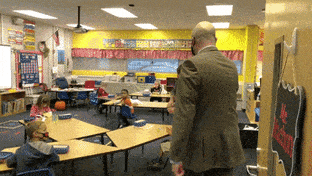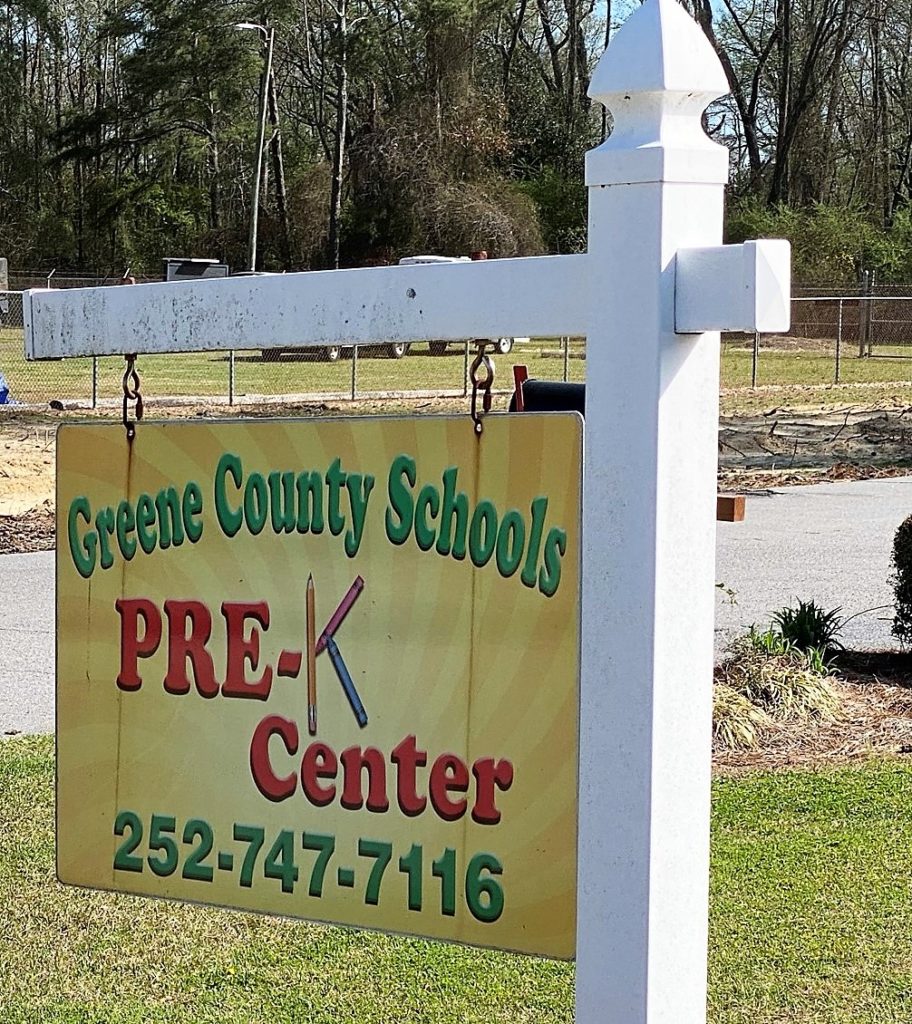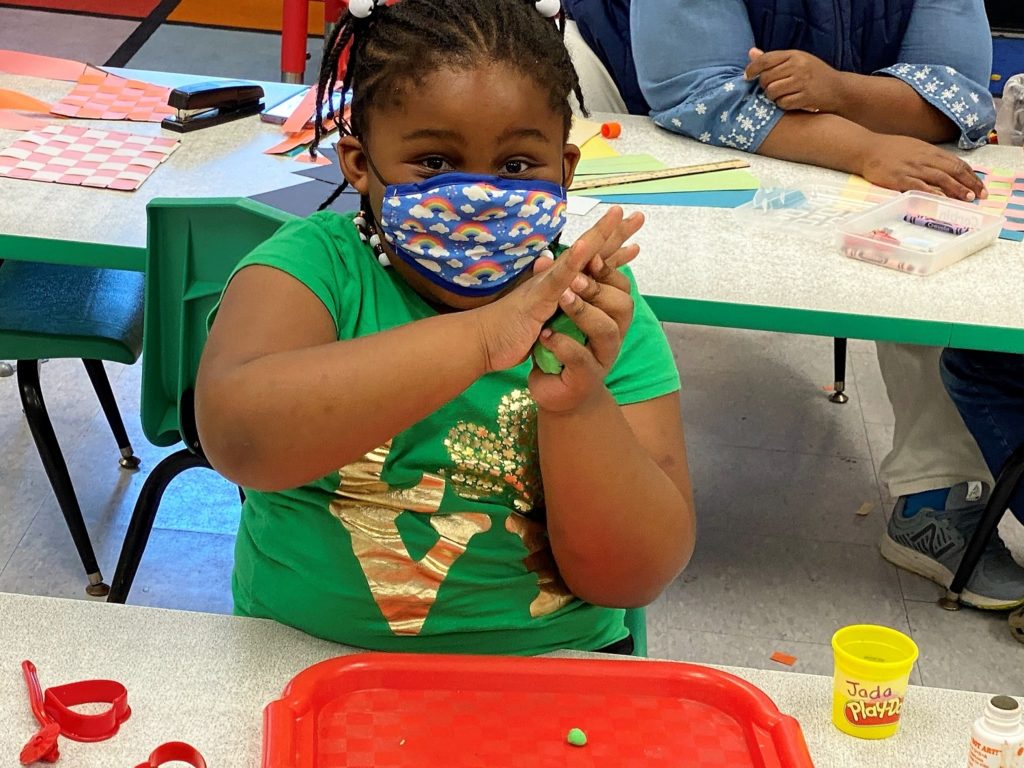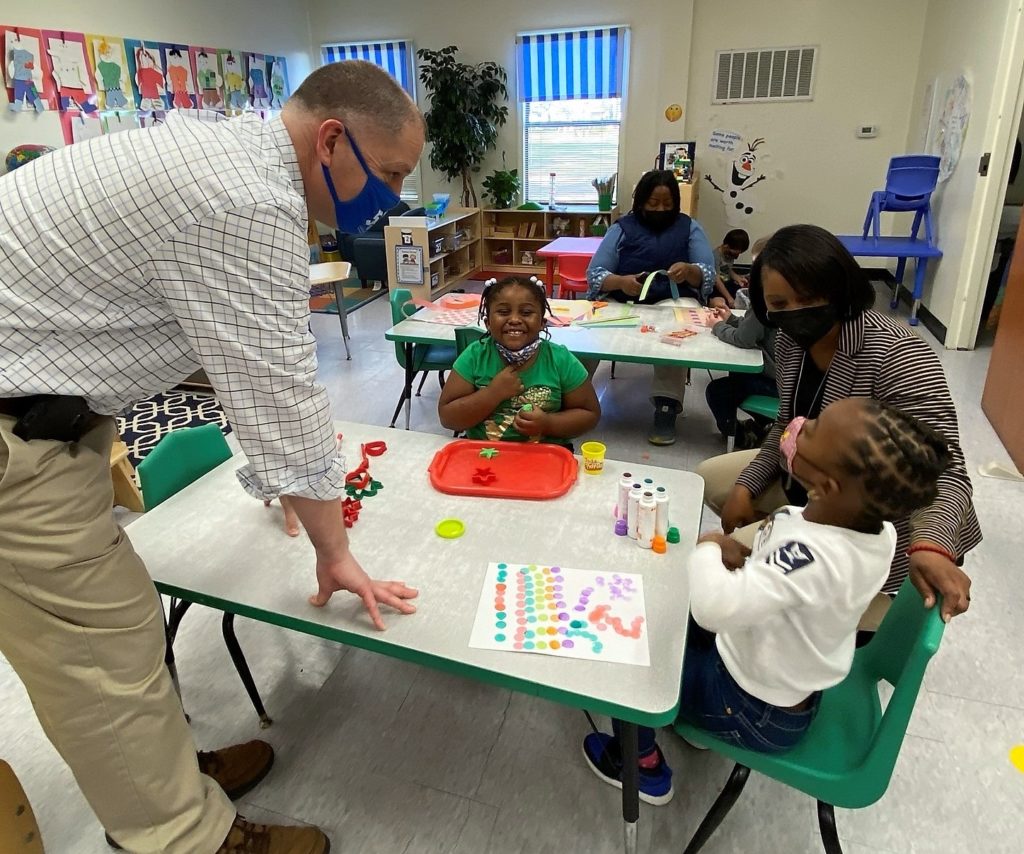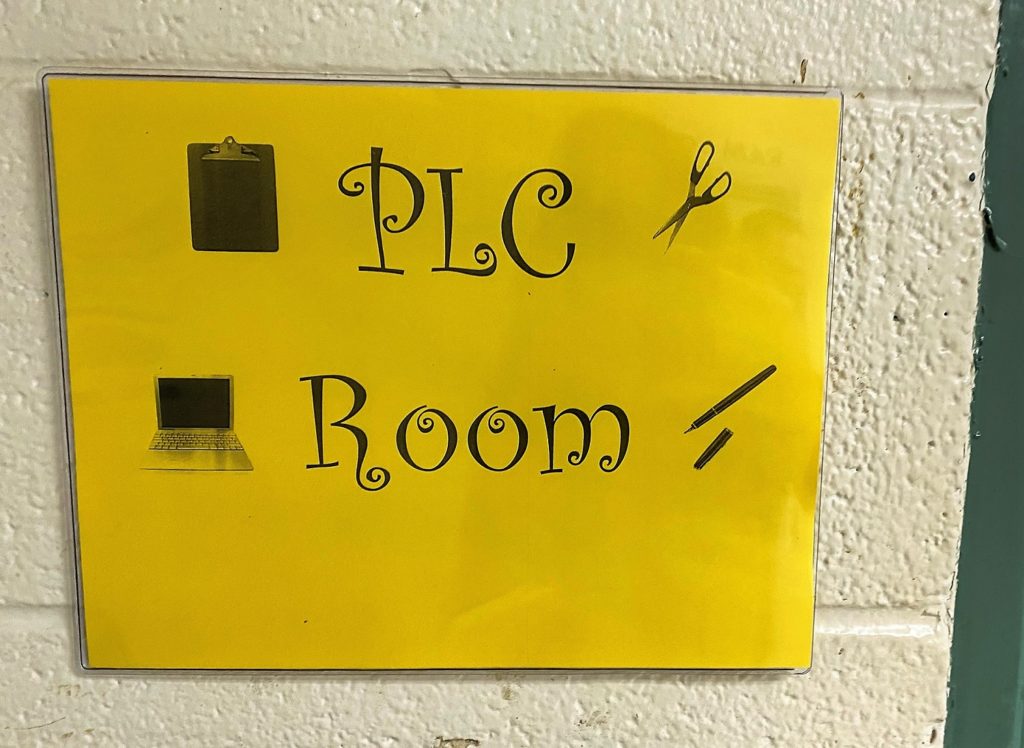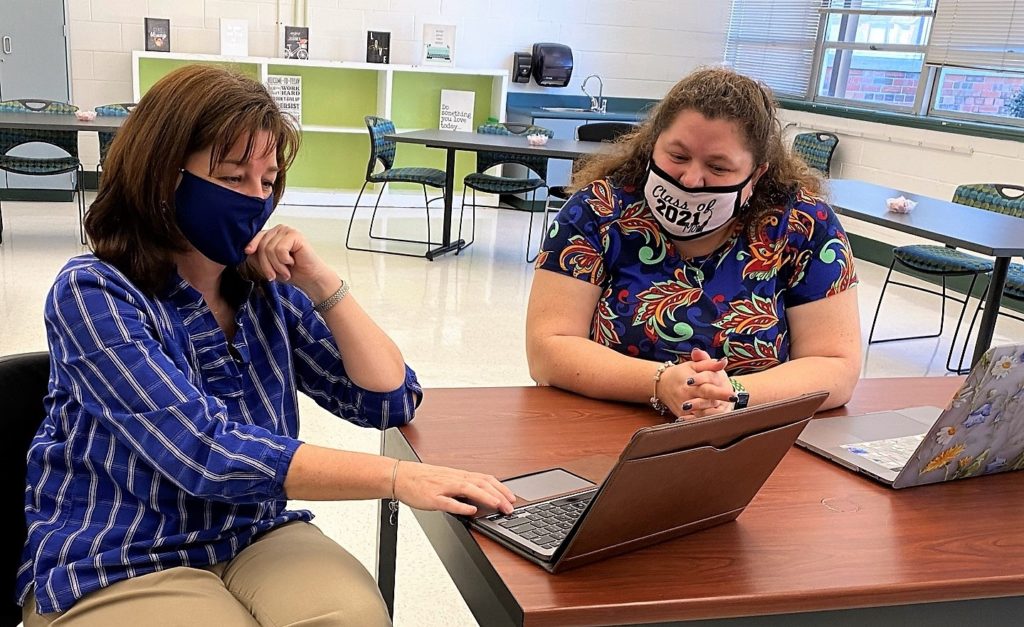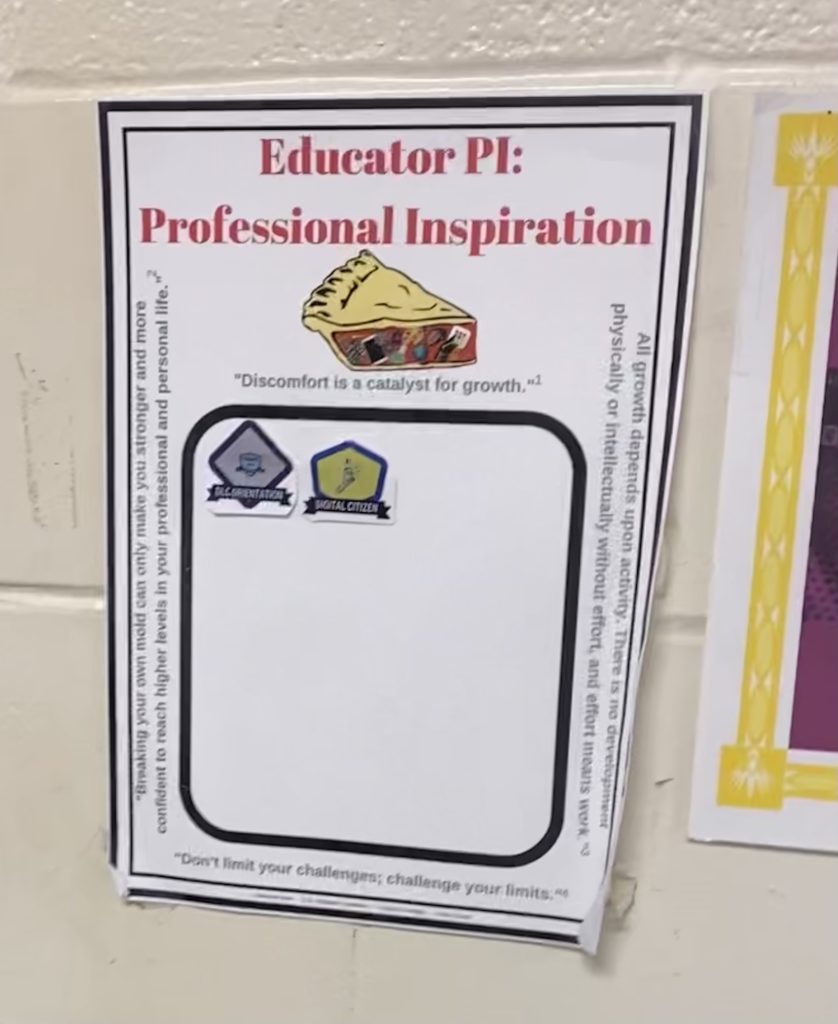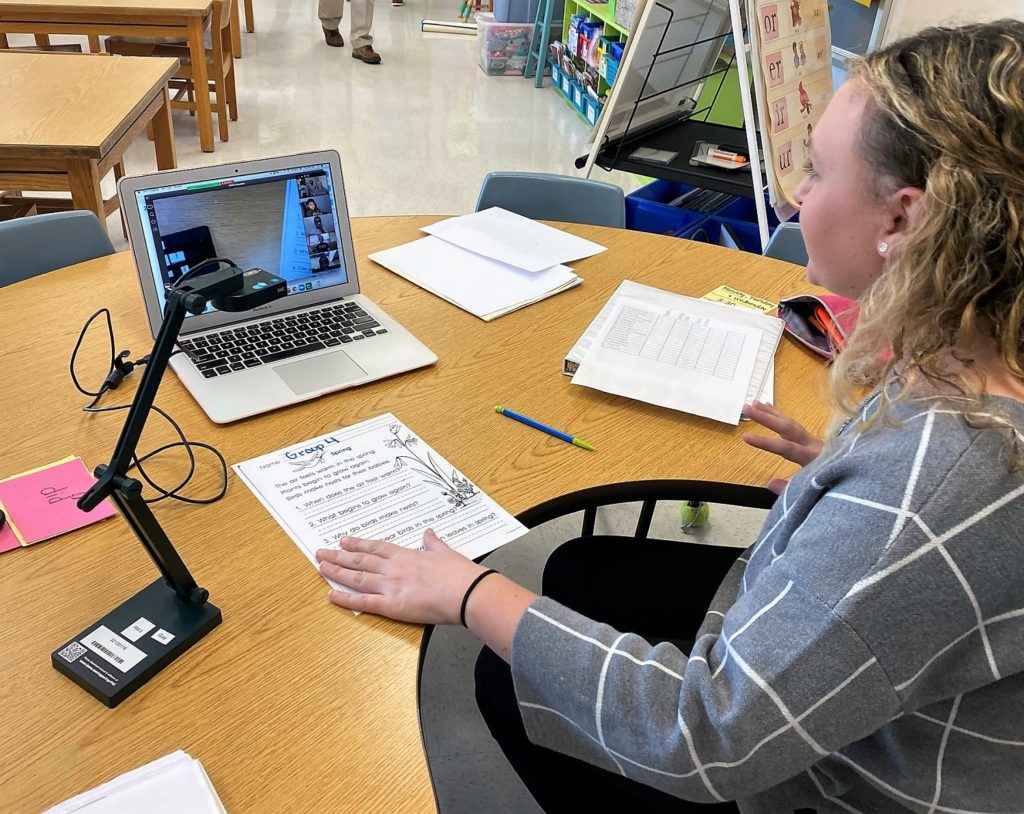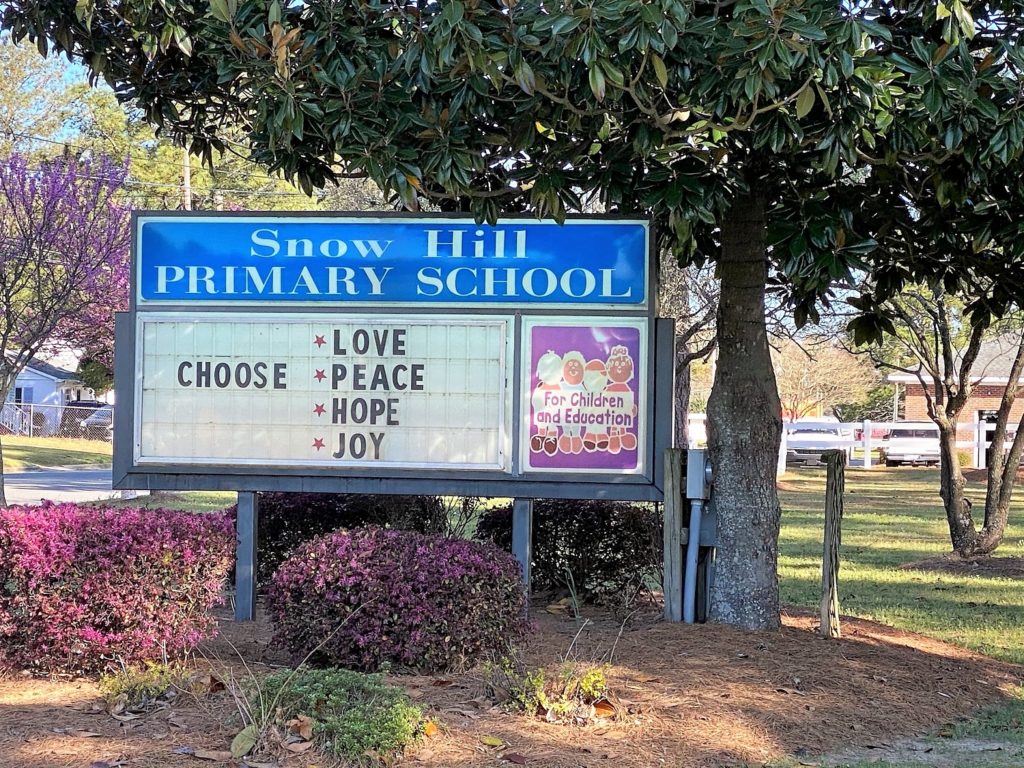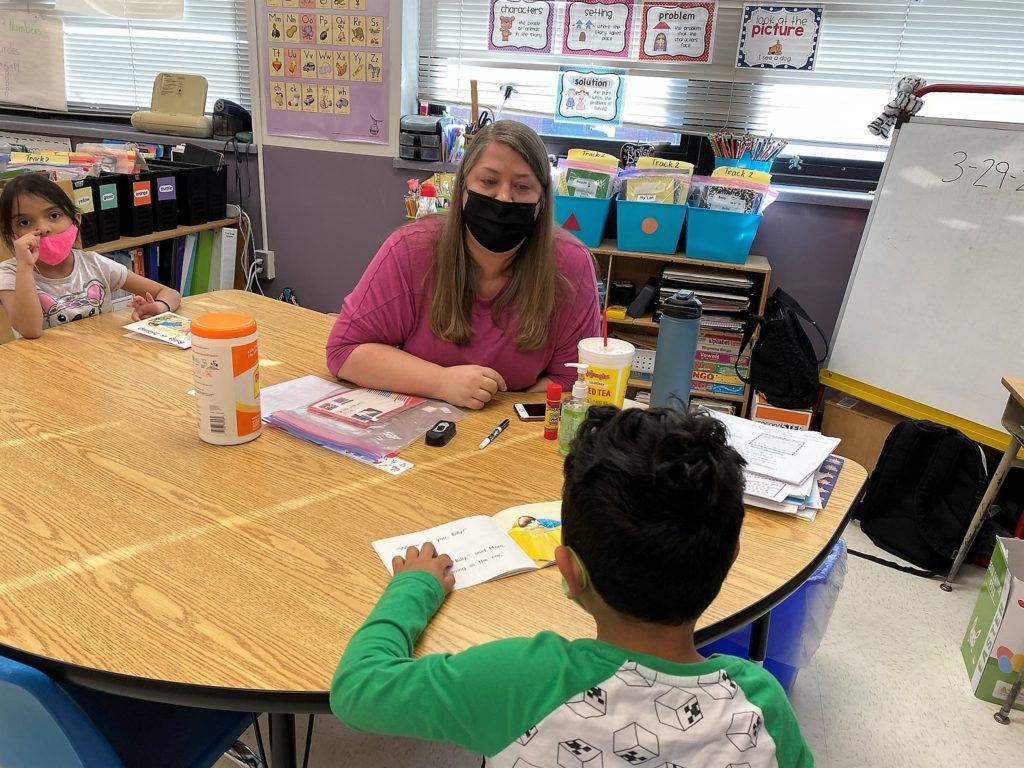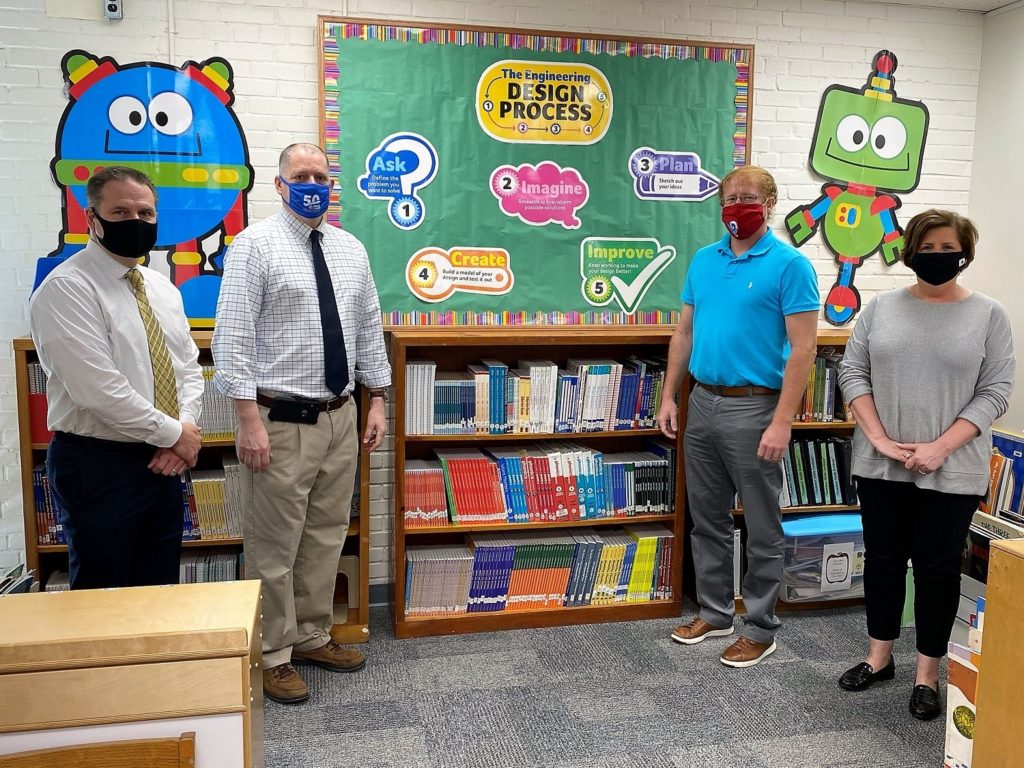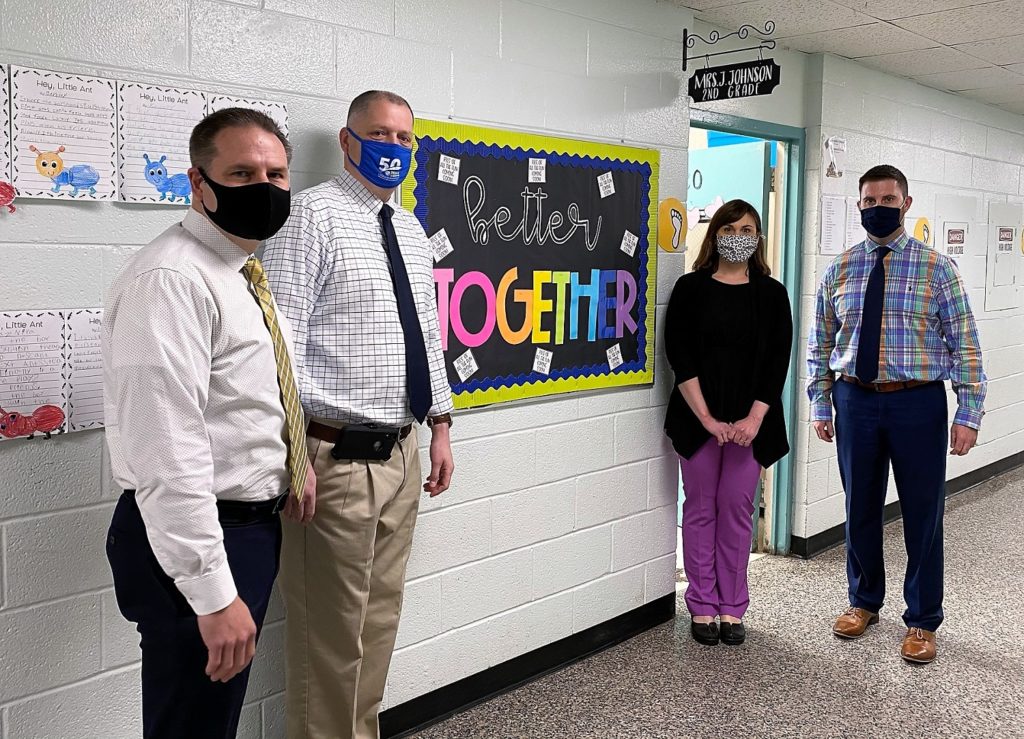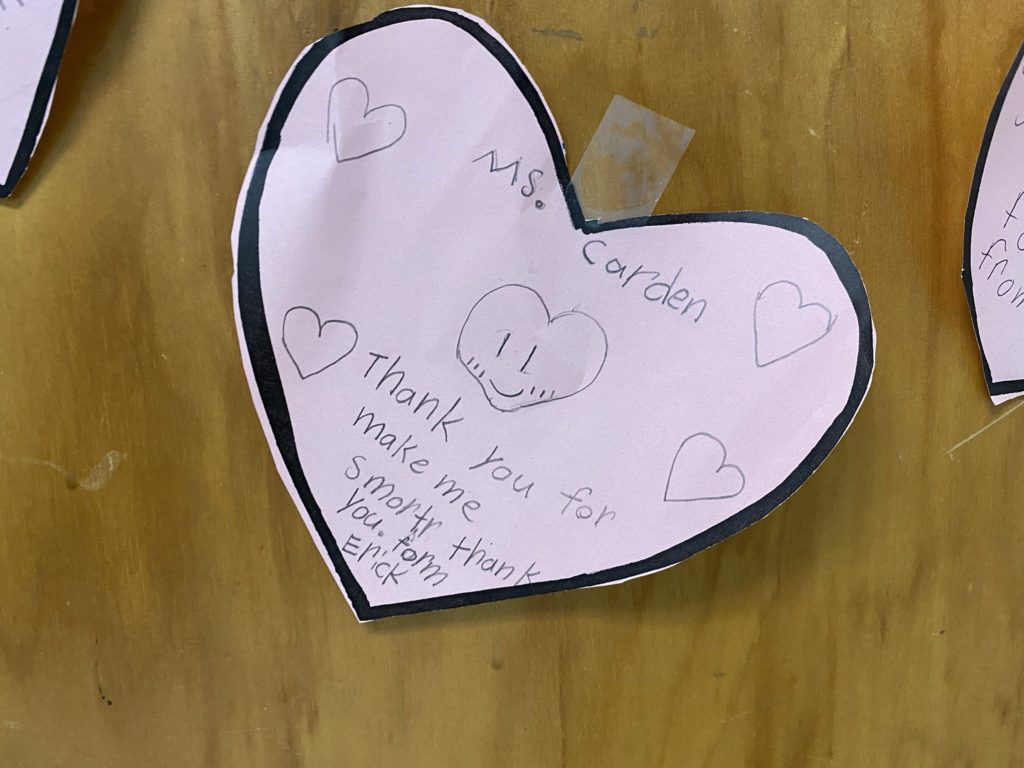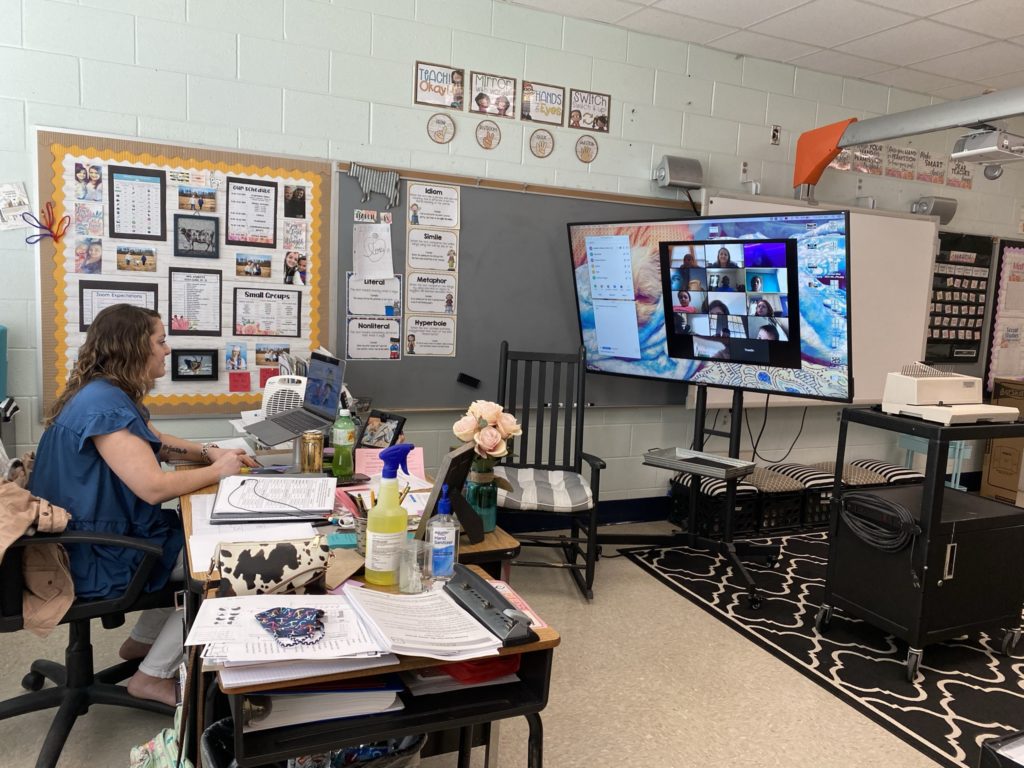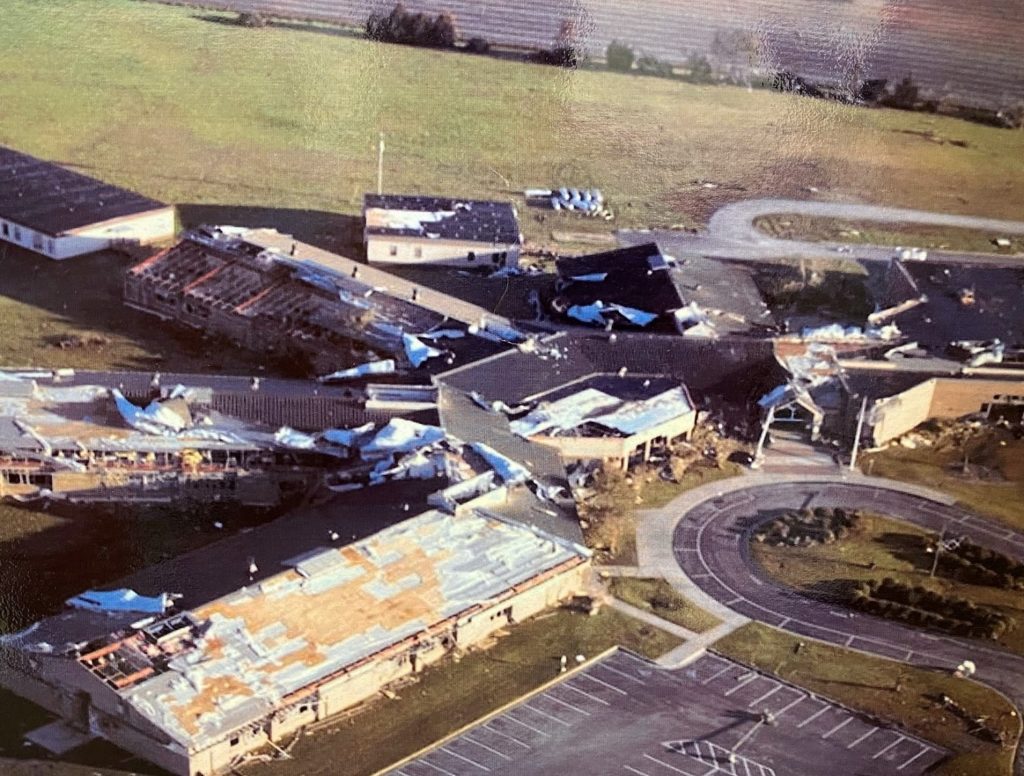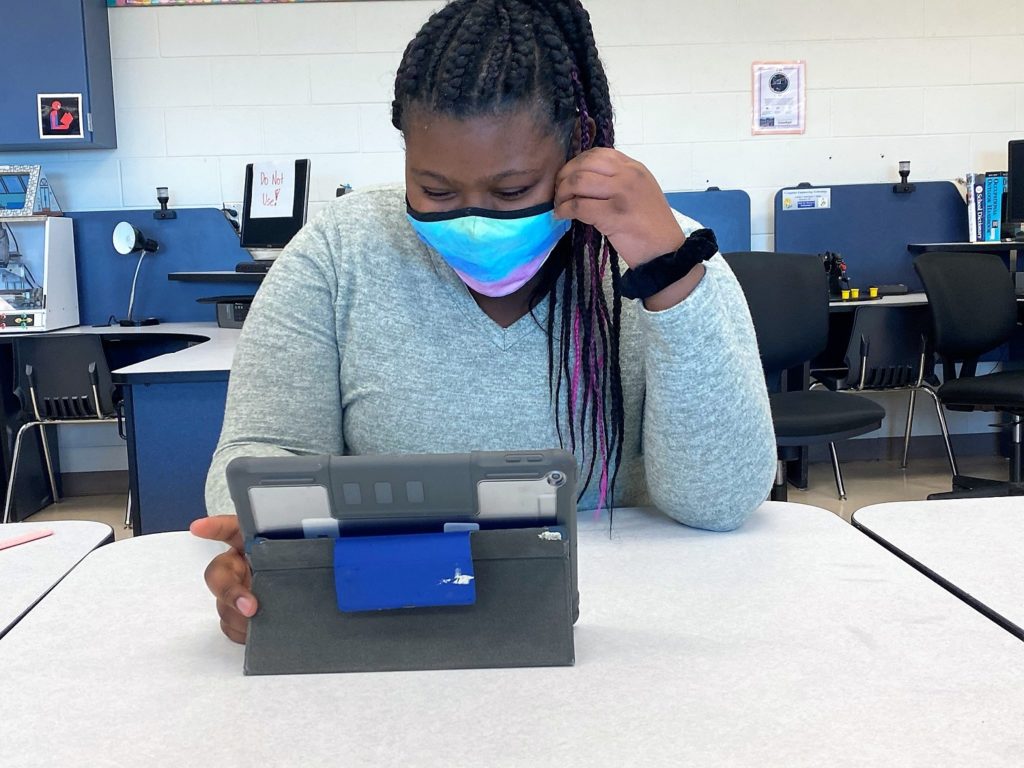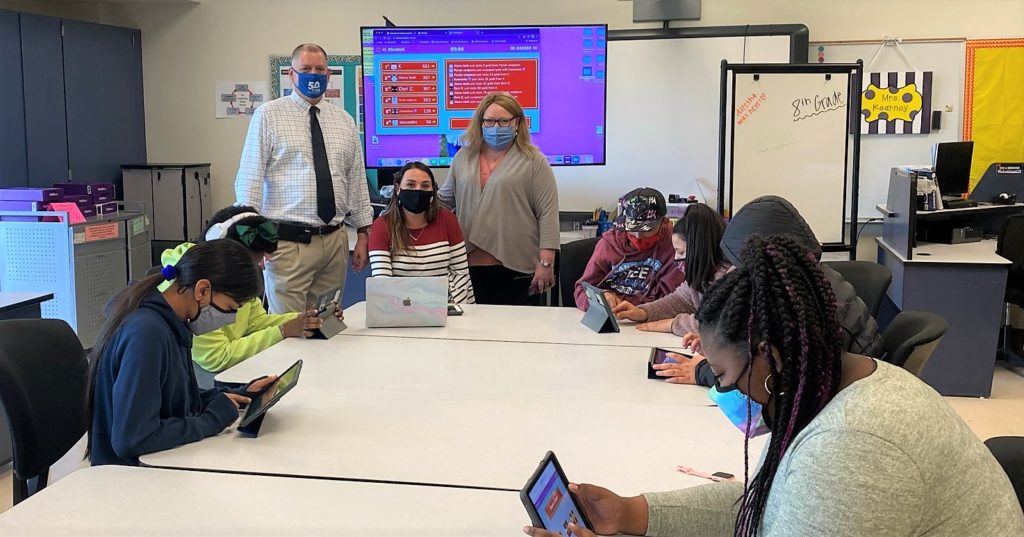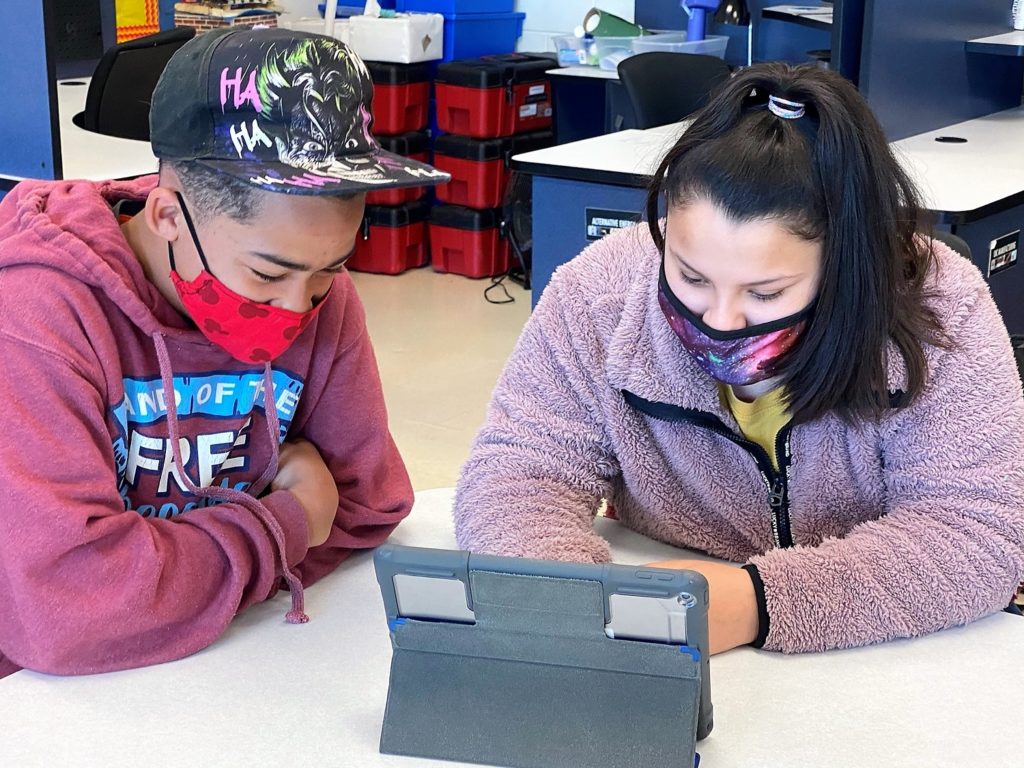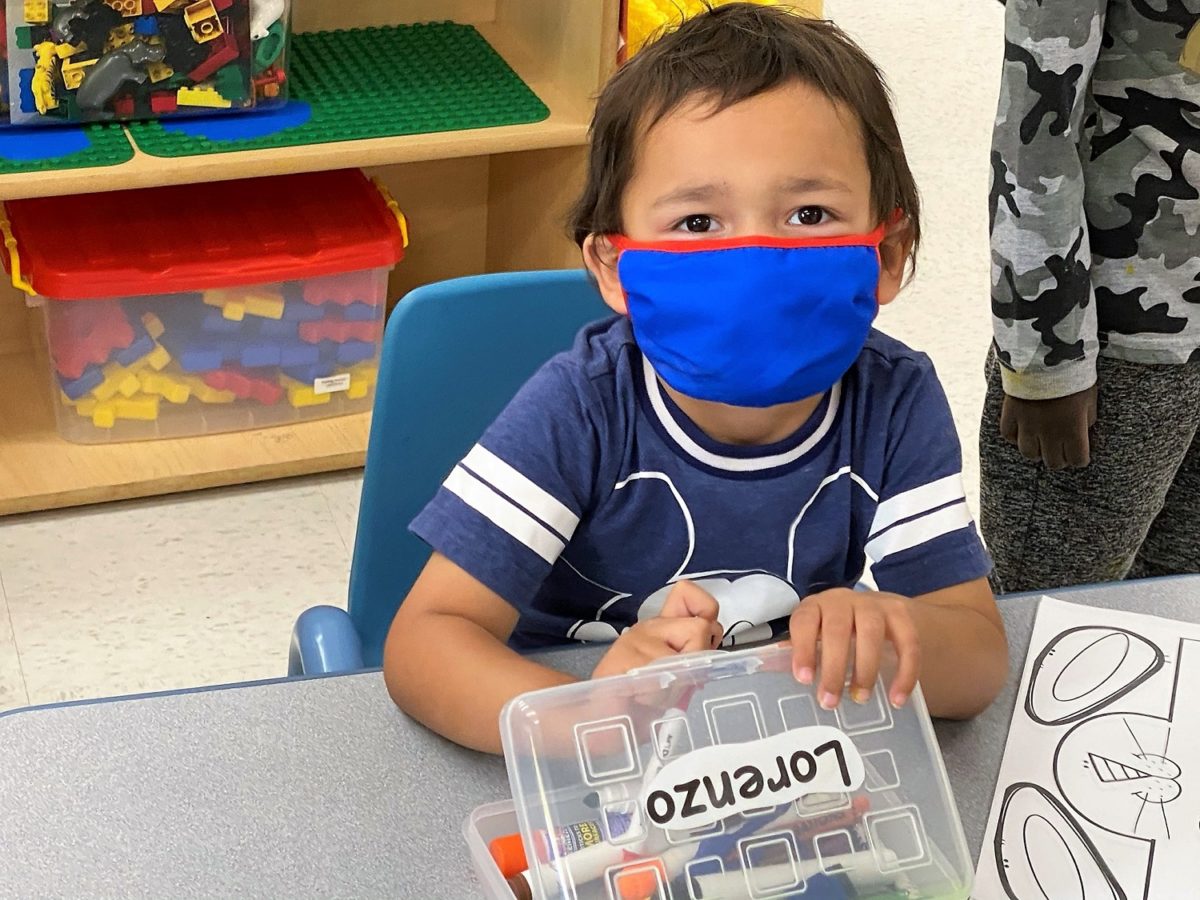
|
|
This week is national Teacher Appreciation Week, and National Teacher Day is celebrated today — May 4, 2021. To all of our teachers, we are thankful for you every day and never more so than this year. We see you, we honor your leadership and public service, and we lift up the lasting impact you have on our students, our state, and our future.
This article about Greene County Schools continues our in-depth look at school districts across North Carolina. Many people only know the school their child attends or the school where they teach. Very few people understand how schools within districts are different, much less how districts are different. We want you to “go and see” these places with us.
On March 31, 2021, I visited (almost) all of the schools in the district along with Patrick Miller, the superintendent, and Frank Creech, the chief academic officer, finding along the way messages of thanks for the educators who serve our students day in and day out, even during a pandemic.
Greene County Schools
About 21,000 people call Greene County home — of them, 5,618 are registered Democrats, 2,459 are registered Republicans, and 3,281 are registered unaffiliated. Snow Hill — likely named for the white sands along Contentnea Creek — is the county seat, and 58.7% of the residents in the county are white, 36.8% are Black, and 15.7% are Hispanic/Latinx. The county covers 265 square miles, just a little bit smaller than Charlotte, and 20% live in poverty. There are three employers in the county with more than 100 employees: the Department of Public Safety (which runs the Greene Correctional Institute), Greene County Public Schools, and the County of Greene.
The district serves just under 3,000 students, who are about equally white, Black, and Hispanic/Latinx. Given the percentage of students who are economically disadvantaged, the district qualifies for the community eligibility provision, which means all kids get breakfast and lunch free.
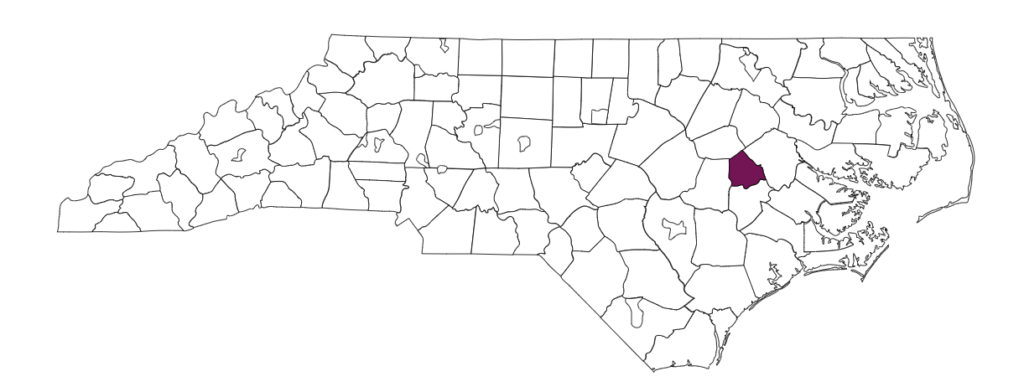
Miller is respected among superintendents. He serves on EducationNC’s board, but he also serves as chair of the Low-Wealth Schools Consortium and chair of the North Carolina Professional Educator Preparation and Standards Commission (PEPSC). He served on the Governor’s Commission on Access to Sound, Basic Education and is the past president of the North Carolina Alliance for School Leadership Development (NCASLD).
When Miller was graduating from Greene Central High School in 1988, he didn’t plan to become the district’s superintendent. But his children, who attended public schools in Greene County too, are the eighth generation of Millers to call the county home. Miller graduated from UNC in 1993 (earning $20,000 as a first-year teacher) and then taught music and theater arts for 10 years — which explains why he listens to Broadway music driving from school to school. He went on to earn a master’s of school administration before serving as principal of West Greene Elementary from 2005-08 and then becoming the superintendent in January 2008. He received his doctorate in 2011, and he was named the A. Craig Phillips NC Superintendent of the Year in 2019.
Here is what I have observed. He’s a man with vision for all that education can be who tells himself he doesn’t always have the right words — but if you get him fired up about students, watch out. He proves himself wrong in those moments with a fiery passion that is unmatched.
His is a story of believing leaders need to be supported. Students in their learning. Educators in their classroom. Principals in their school leadership. He notes the support he has received during his tenure as superintendent, including that of his wife — Becky, a music teacher — and the chair of his board — Patricia Lee Adams, who has been chair the whole time he has been superintendent.
“Nobody leaves here for a lack of support,” says Miller, noting the district employs all kinds of interventionists from instructional technologists to literacy facilitators to STEM directors to math coaches in addition to nurses, counselors, and speech therapists.
If you look up Greene County Schools, it will look like there are six schools in the district, but there are really eight because the district has a freestanding pre-K center and an alternative school. According to the formula our state uses to grade schools, in the 2018-19 school year, three were D schools, two were C schools, and one was an A school. One school met growth and two others exceeded growth. The district is a good case study on why the school performance formula needs to be at least tweaked.
In 2017, AASA, the national school superintendents association, conducted a study of innovative practices in K-12 districts across the country. Twenty-five districts were identified for innovative approaches impacting student learning. Greene County Schools was one of the districts.
The study found, “As a high poverty district in North Carolina, Greene County Schools confronts funding and equity issues constantly. Yet, they have been fortunate to have leadership relentlessly committed to serving all students. This fierce promise, when faced with budget constraints, has brought forth an unwavering will to find a way. The spirit of Greene County Schools is one of ‘together, we can do it’ optimism and resolve, as well as one of great inspiration to schools that feel stuck or blocked by resource limitations.”
Miller says, “Whenever a teacher has an idea, we don’t ever really shoot it down.” He says the superintendent’s job is to get to “yes.”
Here is his thank you to teachers in his district and beyond.
Meet the educators and schools in Greene County.
Greene County Schools Pre-K Center
Yuvonka Davis — the wife of Sen. Don Davis, D-Greene — is the director of the GCS Pre-K Center. The Center has 10 classrooms serving about 165 pre-K students, including a virtual classroom, “3 school” — a classroom for 3-year-olds — a classroom for exceptional children, and PSL — preschool to support literacy where parents can earn a GED.
Here is Davis’s thank you to teachers.
Meet Tonya King. King is a teacher’s assistant at the Pre-K Center. She works 7:15-3:30 at the center then 3:45-10:30 at Food Lion, while also working on her teaching license. She has a 3.7 GPA.
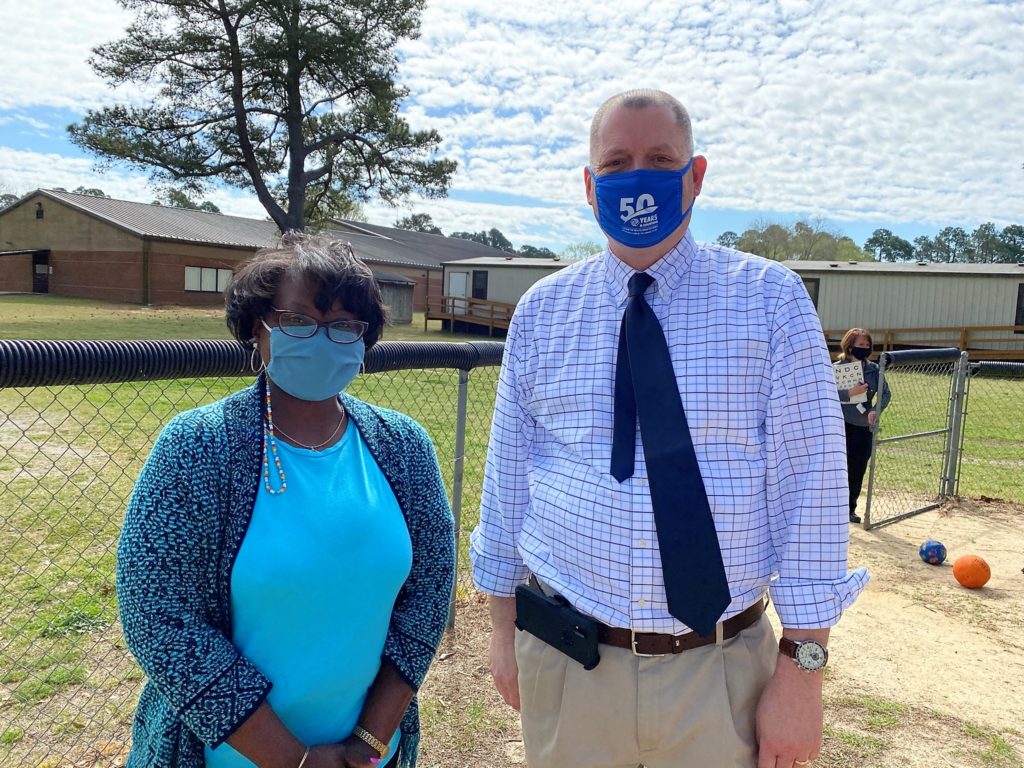
You can read all about the Center in this article by EdNC’s Liz Bell.
A few more notes about the district before introducing the rest of the schools
The district lifts up students. There are students of the week and student spotlights.
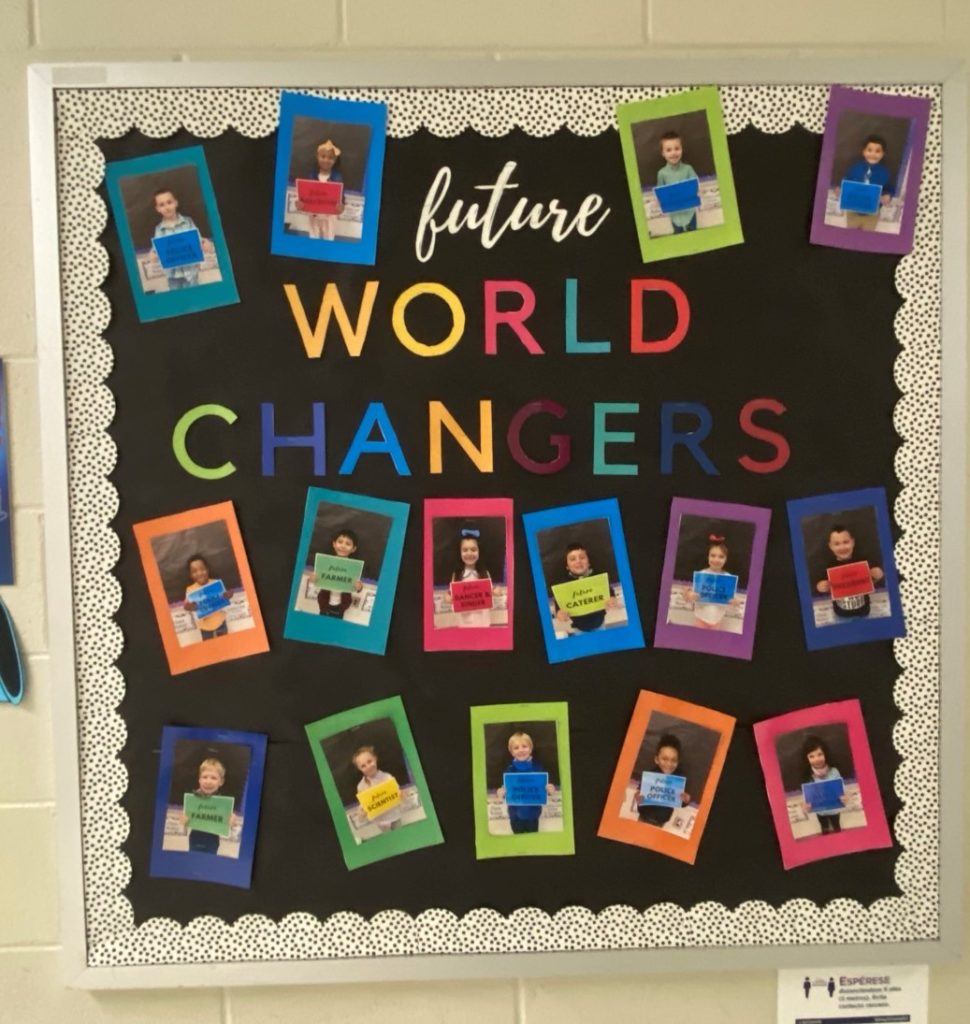
The district decided to be 1:1 — meaning every student has a device — back in 2002. That’s right: 2002. Eighteen years in, the district relies on Apple products, mostly iPads. Because these investments happened early and are a priority year to year, other investments in technology from digital document cameras to large screen interactive TVs are found in classrooms districtwide.
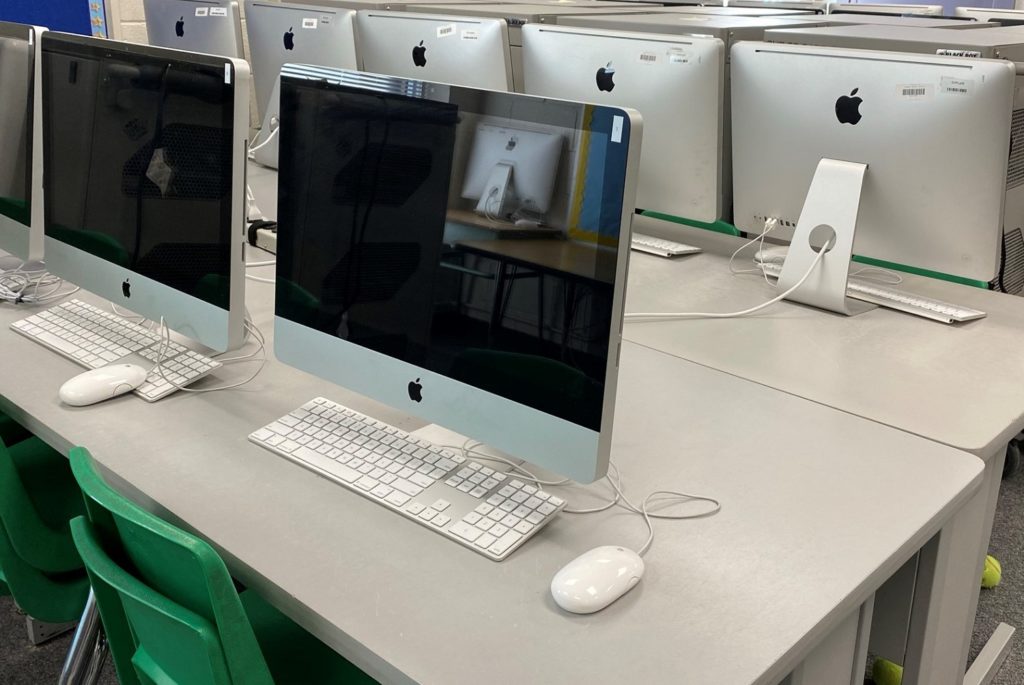
Los Puentes — which means “the bridges” — is the district’s two-way immersion program for students in grades K-5. Math and science are taught in Spanish, and English/language arts and social studies are taught in English. Teachers are recruited through Participate. Here is more information on why this makes a difference in student outcomes.
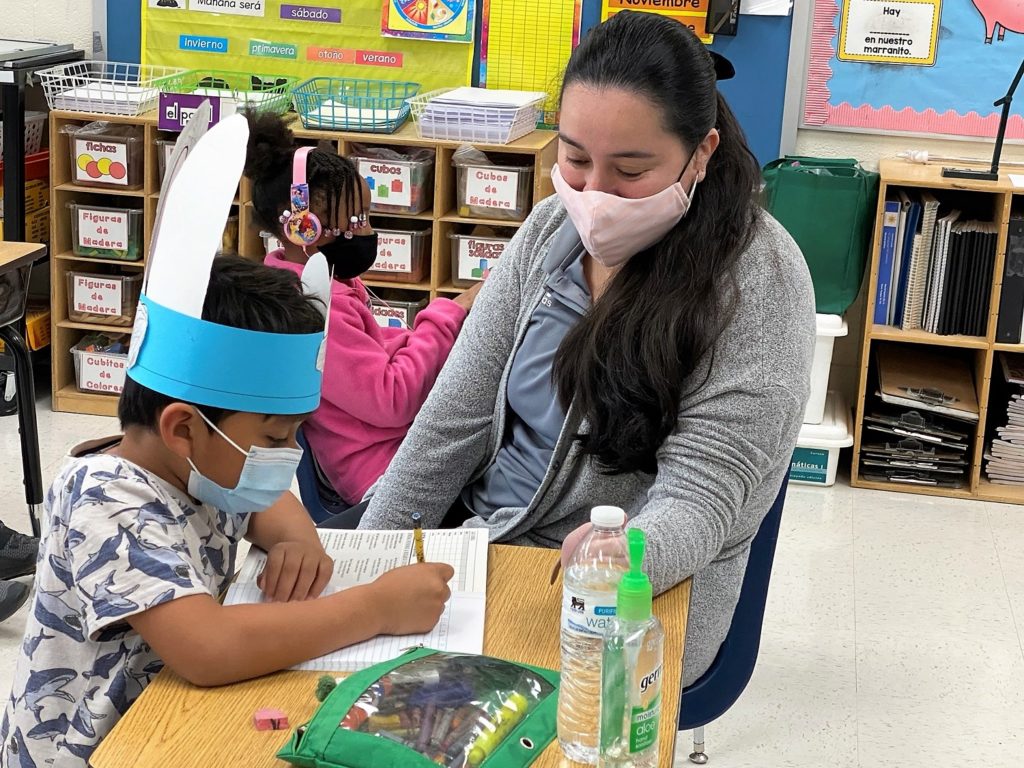
Data matters in this district. Four data managers each serve two schools providing real-time support on everything from enrollment to updating information about each student to scheduling to report cards.
Multi-Tiered System of Support (MTSS) is coordinated districtwide. Check out all the acronyms — IABS, PBIS, SEL, ECATS, and more! While this may look complicated, Jennifer Gardner, the district’s MTSS coordinator says, “it’s just school improvement.” You can read her reflections on the district’s journey here.
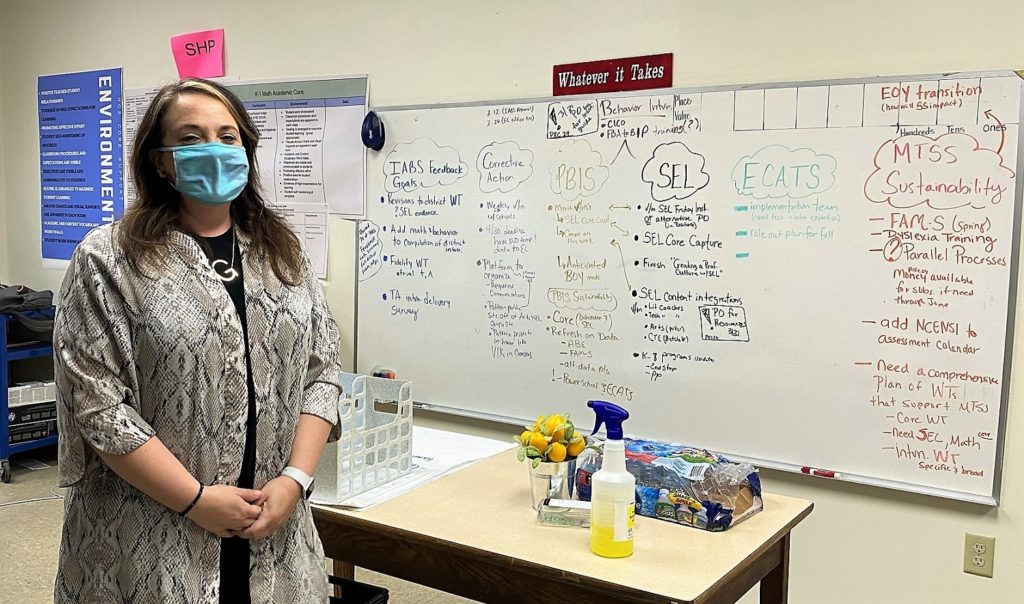
The district has about 300 teachers, 40 teaching assistants, and 35 interns who mostly attend East Carolina University. All engage in cooperative teaching, which means in many classrooms there are three adults working with students. Ninety percent of the district’s teachers come through ECU after working in the district as an intern, according to Miller.
There is differentiated professional development for teachers, and many teachers post their professional development on the outside of their door along with their names, the grade they teach, and where they went to college. Each school has a designated room for PLCs — professional learning communities — to meet separate and apart from the classroom. While I was visiting, new name plates for desks had arrived for teachers who are national board certified.
Miller says because of the high numbers of transitions students make between schools relative to other districts where there is just one path from elementary to middle to high school, horizontal and vertical alignment within and across schools is critical.
Snow Hill Primary
Snow Hill Primary serves K-1 students. The principal is Emery Smith. This school is all about STEM.
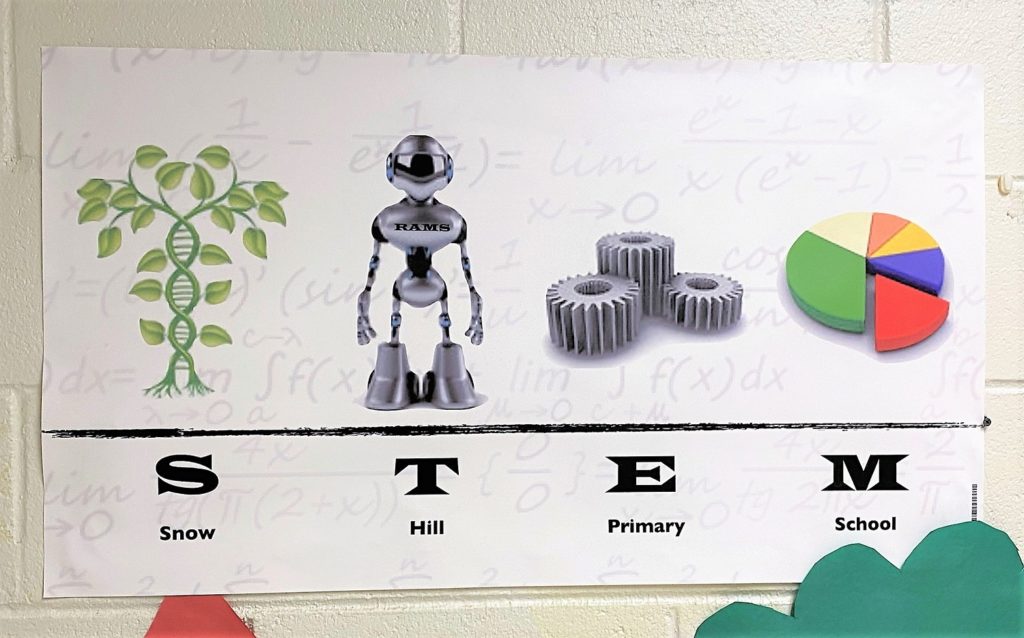
Meet Sharon Gay. When she is introduced to me as the help desk coordinator, there is a quick and loud correction. She is the help desk hero.
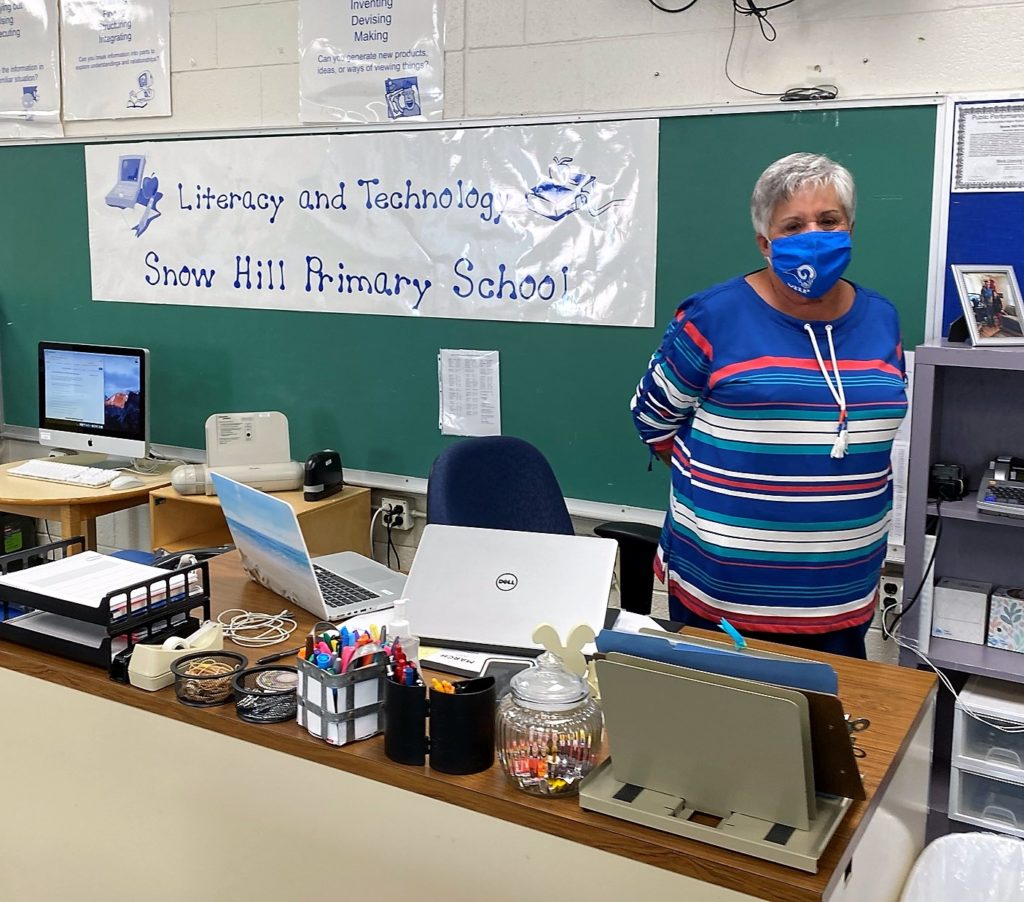
West Greene Elementary
West Greene Elementary serves students in grades 2-3. The principal is Phil Cook. This school lives it’s motto: “Every student matters, every moment counts.”
The school is partnering with the Public School Forum of North Carolina to build a trauma-informed school through the NC Resilience and Learning Project. Cook says they are striving to meet the needs of students academically and socially.
That requires helping students and teachers become more resilient. One practice that has made a difference is called “tap in-tap out” — when a teacher needs a 5-10 minute break, they know who to call. Adopting a growth mindset, as well as understanding culturally responsive teaching and the brain, foster resilience too.
“Relationships are key to every we do,” says Cook.
Meet Angela Sutton, the school’s teacher of the year, with her thanks for teachers.
Greene County Intermediate School
Greene County Intermediate School serves students in grades 4-5. The principal is Jada Mumford. At this school, “today’s learners are tomorrow’s leaders.” It’s the newest of the schools in Greene County.
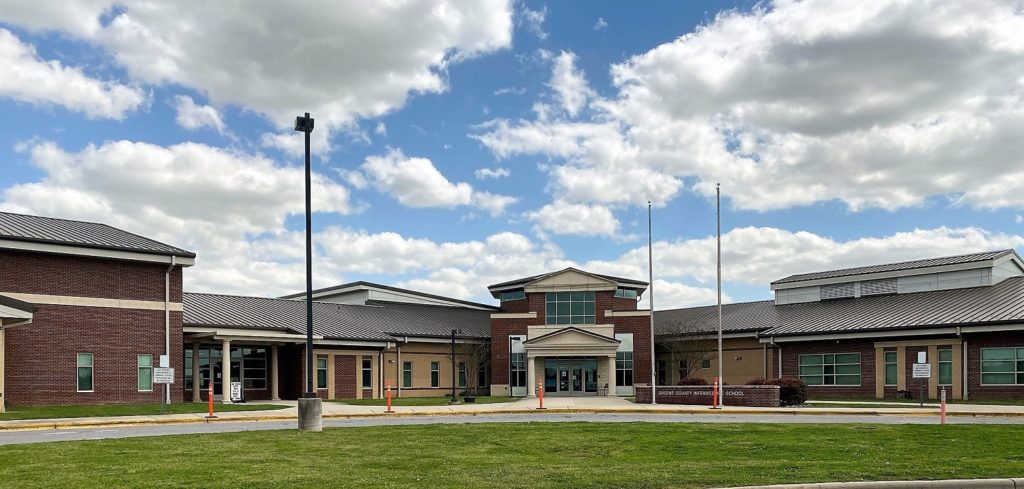
Miller’s wife, Becky, teaches music at Greene County Intermediate. The day I visited, the Millers talked about the upside of the smaller, in-person classes during COVID-19. For many students, the social pressure is easier to manage in smaller classrooms. “I’m going to be bad,” a student had said to Becky about fears associated with all students coming back in person in April 2021. Thank you, Becky, for your leadership and public service.
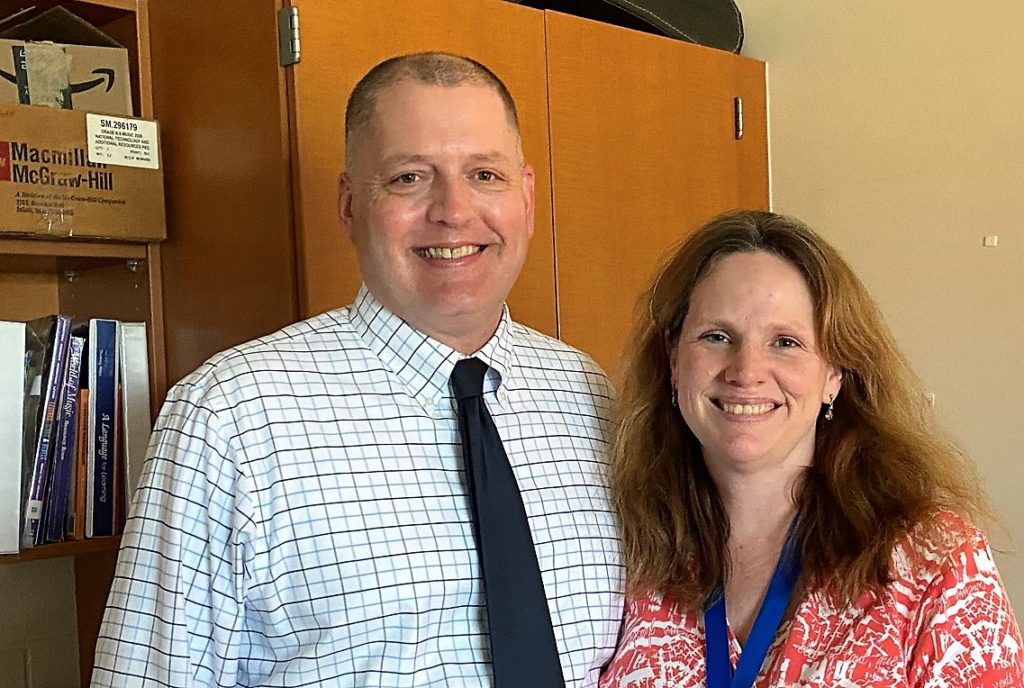
Greene County Middle
The principal of Greene County Middle School is Diane Blackman.
Standing in an amazing STEM lab, it’s hard to believe the school was destroyed in 2011 by a tornado. Thinkers are welcome here. Sixth-graders starts with the engineering design process, including research, citation, and public speaking; seventh graders learn to work together through group projects; and then eighth graders work independently to invent something, including building a prototype.
The principal notes the “outpouring of dedication” required by teachers during the pandemic to teach remote and face-to-face, learn new platforms, reach students, and conduct home visits.
Greene County Alternative Education Center
Greene County Schools offers three options for high school students: an alternative education center, the central high school, and an early college.
The Greene County Alternative Education Center serves students in grades 6-12. Leigh Corbin is the director. While 75% of the students here self-enroll because they are behind academically, Miller notes students choose the Center for a wide variety of reasons, including the need to have a job or athletics requiring a lot of travel.
Greene County Central High School
This is the school Patrick Miller attended back in the day.
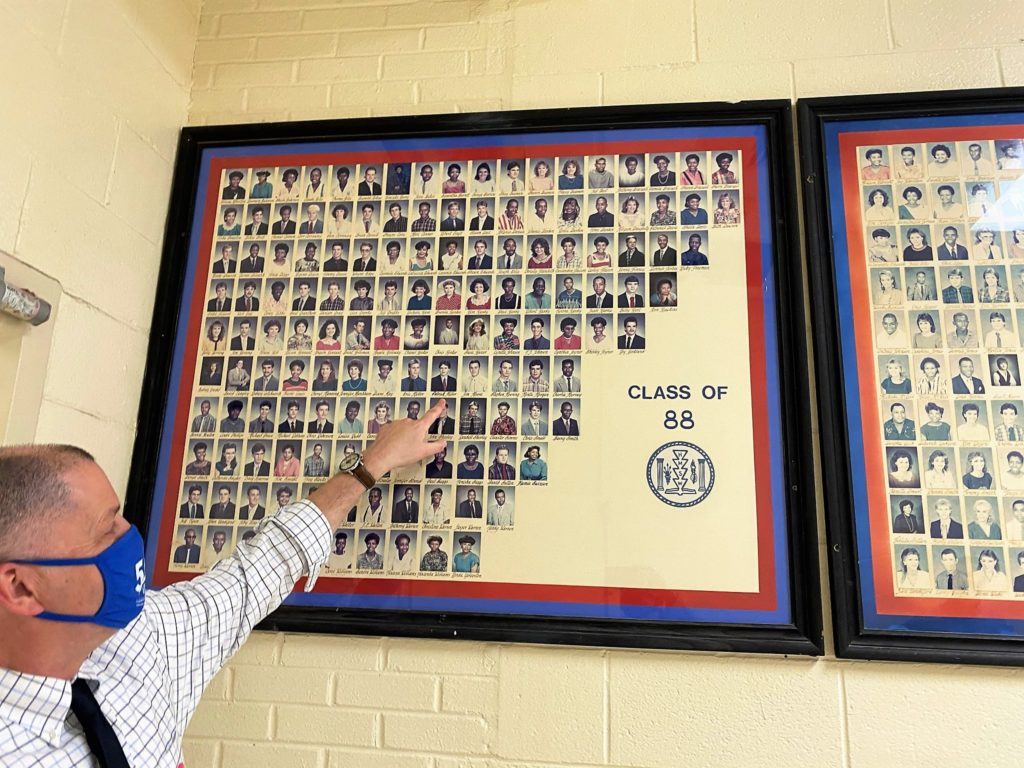
Patrick Greene is the principal of Greene County Central High School. When we get to this NC STEM School of Distinction, we find the principal in a classroom observing a teacher.
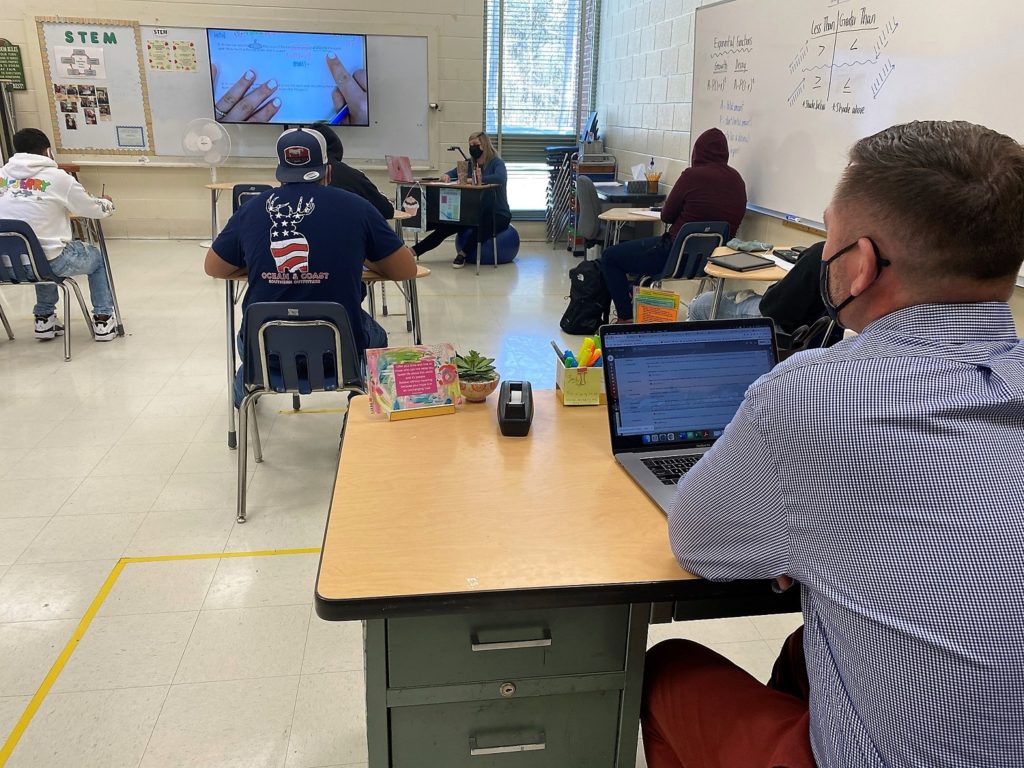
From the arts to SEL to the STEM Scholars to the horticulture program, this school is a wow. EdNC’s Caroline Parker is following up, but in the meantime here is a sneak peak. Play the video and prepare to be amazed. Check out @EdNC_Rural on Twitter for more.
More on STEM in Greene County from EdNC
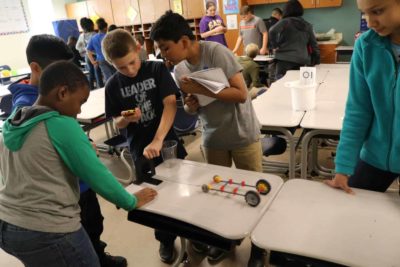
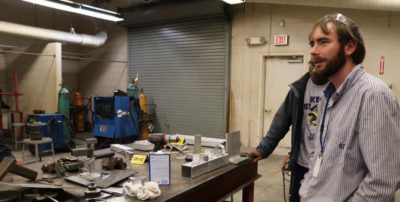
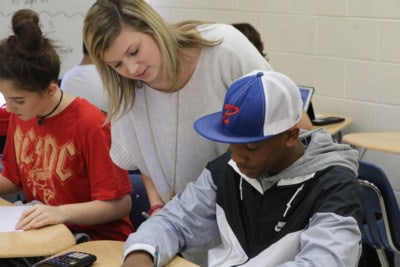
Greene Early College High School
Greene Early College High School is a cooperative and innovative high school serving about 150 students. The principal is Rodney McNeill.
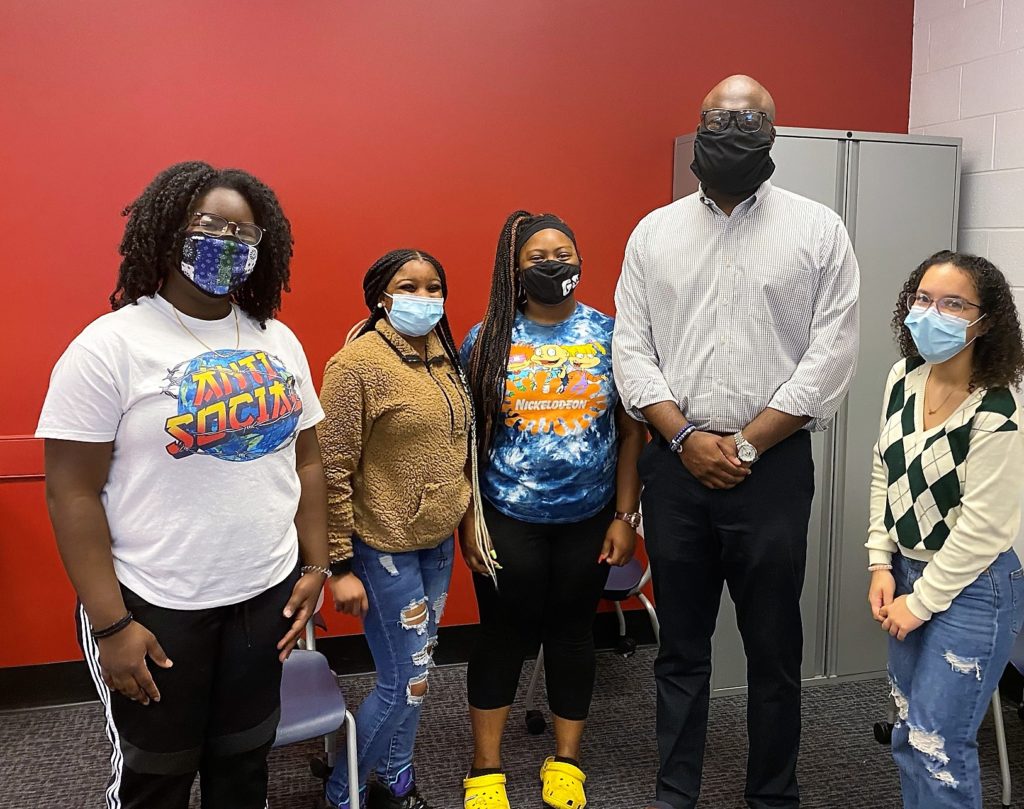
Going above and beyond, two English teachers produced podcasts as a way to connect with their students during the pandemic.
From what is a work ethic to why we make excuses, Emily Garris’ podcast is called “Tips and Tricks from your English Class.” You can listen here. Her favorite episode? “2020: The Gift and the Curse.”
You will love the “nonsense ramblings of your English teacher” in this podcast by Natasha Martin called “Takeaways from Your English Classroom.” You can listen here. The teachers co-produced this episode, “Flashback and Fast Forward,” for ninth graders who don’t really know yet what high school is like.
As they told me, “GEC is more than a school.” It’s family. It’s open-minded. It’s an opportunity. Take a look:
A school system
“Even though we are poor,” says Miller, “we’ve managed our resources very well. You can see these classes don’t go without.” While the parents and teachers see that in the classrooms, the students feel it in their experience of learning.
He concludes, “We are a school system, not a system of schools.”
P.S. Here are tips from first grade for 2021.
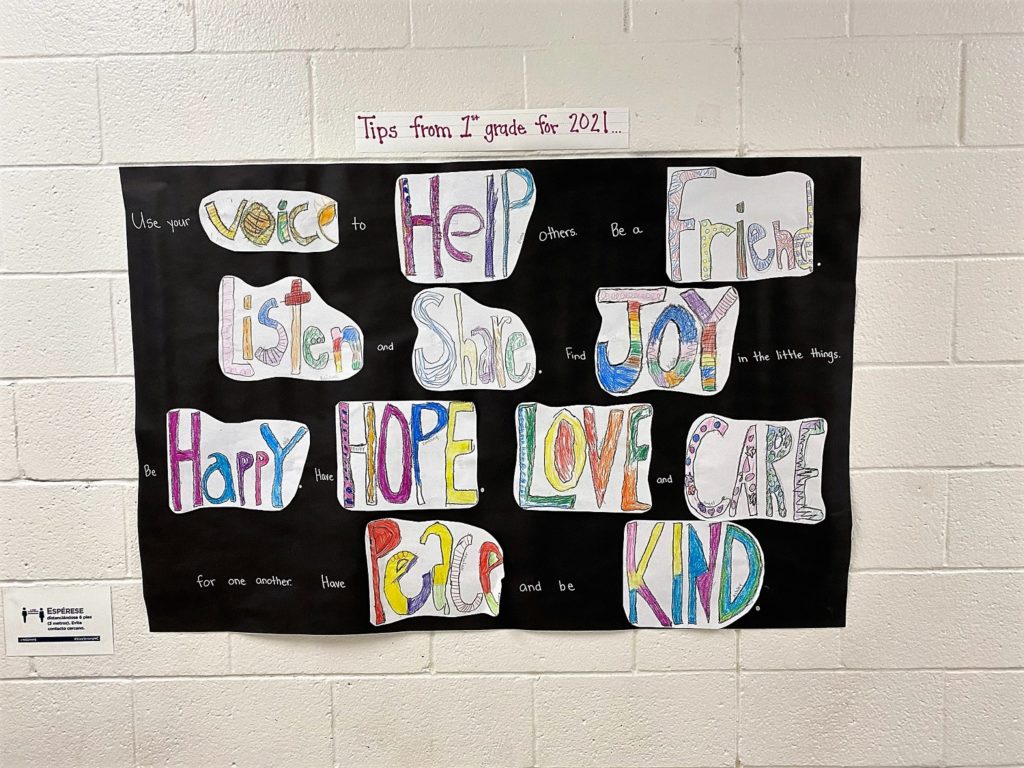
Recommended reading
